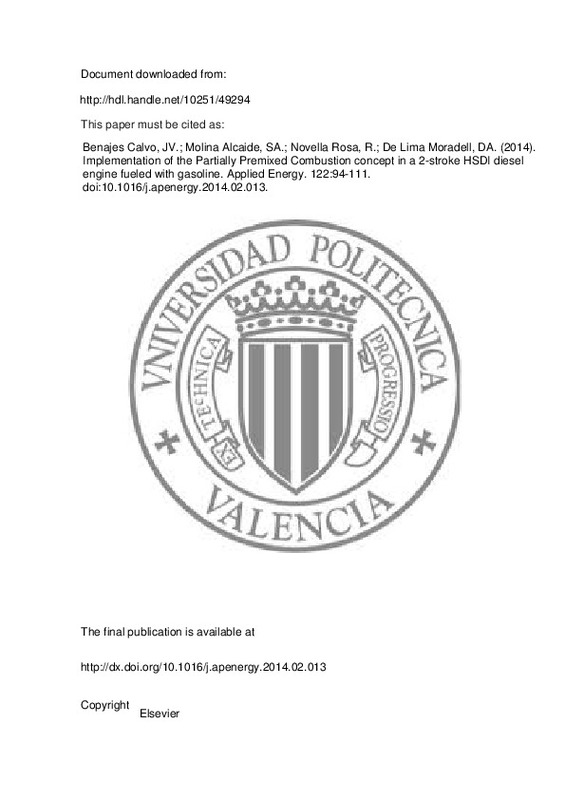JavaScript is disabled for your browser. Some features of this site may not work without it.
Buscar en RiuNet
Listar
Mi cuenta
Estadísticas
Ayuda RiuNet
Admin. UPV
Implementation of the Partially Premixed Combustion concept in a 2-stroke HSDI diesel engine fueled with gasoline
Mostrar el registro completo del ítem
Benajes Calvo, JV.; Molina Alcaide, SA.; Novella Rosa, R.; De Lima Moradell, DA. (2014). Implementation of the Partially Premixed Combustion concept in a 2-stroke HSDI diesel engine fueled with gasoline. Applied Energy. 122:94-111. https://doi.org/10.1016/j.apenergy.2014.02.013
Por favor, use este identificador para citar o enlazar este ítem: http://hdl.handle.net/10251/49294
Ficheros en el ítem
Metadatos del ítem
| Título: | Implementation of the Partially Premixed Combustion concept in a 2-stroke HSDI diesel engine fueled with gasoline | |
| Autor: | De Lima Moradell, Daniela Andreina | |
| Entidad UPV: |
|
|
| Fecha difusión: |
|
|
| Resumen: |
Partially Premixed Combustion (PPC) of fuels in the gasoline octane range has proven to combine low NOX and soot emissions with high indicated efficiencies, while still retaining control over combustion phasing with the ...[+]
|
|
| Palabras clave: |
|
|
| Derechos de uso: | Reserva de todos los derechos | |
| Fuente: |
|
|
| DOI: |
|
|
| Editorial: |
|
|
| Versión del editor: | http://dx.doi.org/10.1016/j.apenergy.2014.02.013 | |
| Código del Proyecto: |
|
|
| Agradecimientos: |
|
|
| Tipo: |
|







![[Cerrado]](/themes/UPV/images/candado.png)


